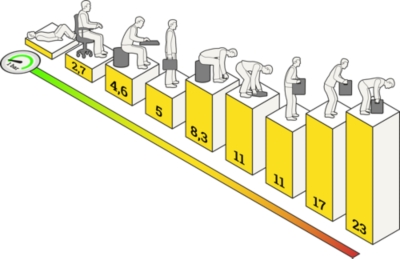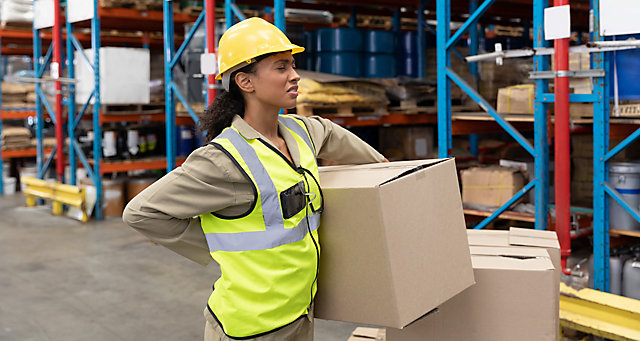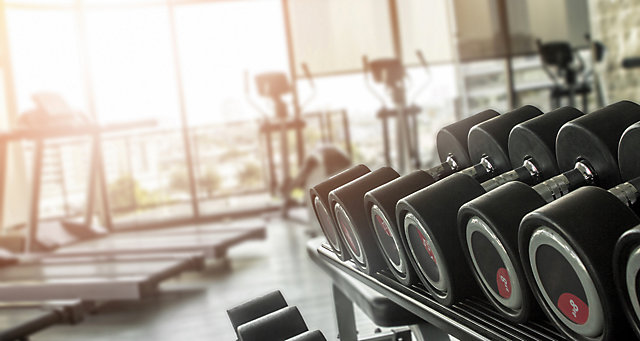How to lift, carry and pull loads correctly
You carry a box over here, a box over there, and at the end of the day you go home with back pain. This is unfortunately the reality for many people working in warehouses, production facilities or on building sites. Eventually, it can lead to more serious back problems, as a result of which employees may have restricted movement, be written off sick for long periods, or even become permanently unable to work.
It doesn’t have to be this way. Here, we show you:
- Why lifting, pulling and carrying loads incorrectly can be so dangerous,
- How you can transport loads without damaging your back and
- What equipment can help.
How incorrect posture can put undue strain on the spine
The spine is our central support structure and a miracle of engineering. It consists of 24 movable vertebrae, a large number of tendons and muscles, and intervertebral disks. As the name suggests, these disks are positioned between the vertebrae. They are filled with liquid, which allows them to absorb shocks and strain, as well as to ensure that the spine maintains its elasticity.
However, the disks often lose elasticity and height as a result of repeated stress and strain. This can lead to further signs of wear, intense pain and restricted movement. Although it can seem like one wrong movement has triggered permanent back pain, this is usually just the straw that, as it were, broke the camel’s back.
What may seem like minor details make a major difference in this process. This particularly applies to the way in which we lift and carry loads: the strain being put on the intervertebral disks varies widely depending on what technique we use.
The following diagram shows how marked these differences are:

Guide to lifting, carrying and pulling loads
How to lift correctly
- Stand as close to the object as possible. Ideally, it should be placed between your feet.
- Keeping your back straight, bend down by pushing your buttocks backwards. Bend your knees to a maximum angle of 90 degrees; avoid hunching.
- Tense your back and stomach muscles – this stabilises your spine.
- Lift the load smoothly and steadily, avoiding sudden movements. Take care not to twist your spine awkwardly.
- Put the load down using the same method.
Important: Before you start, establish whether you can or should lift the object alone. If you’re unsure, get someone to help you. Lifting together is safer.
How to carry a load correctly
- Hold the load close to your body.
- Make sure to stand up straight and avoid arching your back.
- If you have multiple loads, you should distribute them equally between both arms. Carrying a load on just one side is bad news for your intervertebral disks.
Important: If you have to carry a load over longer distances, remember to stop and take breaks.
How to push and pull loads correctly
- Maintain an upright body position. Whether pushing or pulling, you should only bend your torso forward slightly.
- Avoid sudden movements and overstretching your arms. Ideally, hold the handle of the pallet or platform truck loosely at chest height.
- If you have the choice, push rather than pull, as this reduces the risk that you will twist your upper body awkwardly.
Important: Having the right posture will only help to a limited extent if you have overloaded a cart or loaded it in an unbalanced way.
Less is more – tips on maximum weight

How much someone can carry without putting too much strain on their spine depends on a number of factors including their age and physical condition, but also posture, options for gripping the object in question, and the length and frequency of the task. Even the type of floor can play a role.
Legal weight limits only apply to vulnerable groups such as pregnant women. However, where loads are being transported manually, employers must observe the relevant regulations on load handling and carry out a risk assessment, among other things.
The Key Indicator Method can be used to calculate limits and risk thresholds. It takes into account not only the weight of an object, but also a person’s posture and the type of movement they are carrying out.
As a rule of thumb, remember that less is more. Particularly when lifting and carrying, err on the side of caution and reduce the weight of the load.
Strong muscles are more resilient
Some people’s spines are more robust than others. This is often to do with how strong the surrounding muscles are: strong muscles stabilise the spine and make it more resilient. Strengthening the stomach and back muscles in particular is a way of preventing pain and injury.
This is another reason why it isn’t a good idea to plonk yourself down on the sofa after work every day. Instead, try to get regular, back-friendly exercise such as:
- Targeted weight training,
- Yoga,
- Cycling,
- Swimming.
If you find it difficult to fit longer training sessions into your day, remember: Even doing exercises for ten minutes a day can work wonders.
The following article reveals how companies can provide their staff with the opportunity to keep fit at work: How to create a company gym.
Please note: It is important to follow a training programme that strengthens both sides of the body equally. Otherwise, you will increase muscular imbalance, which in turn can cause pain and injuries.

Help yourself – aids for lifting and transporting loads
The best way to move heavy items around is to get a helping hand. That could be from a colleague, or even better, from one of our products designed to make it easier to lift and transport loads.
Choose from a range of equipment including the following:
You can even save yourself the task of pushing and pulling with our electric carts and lifts. These are operated at the touch of a button and require minimum physical effort, making them the best alternative to manual transport. Your spine will thank you.
And finally: tips for seeing, hearing and getting a breath of fresh air
It’s not only our spines that are put under strain during the working day. Our eyes and ears also have a lot to cope with. High temperatures and poor air quality result in decreased concentration, more errors and even illness in some cases.
So here are a few more tips on how to protect your sense organs and improve interior climate in the workplace.
Protecting your eyes
- You should be 50 – 80 cm away from your computer monitor.
- High-quality, non-flickering screens help to prevent eye strain.
- Workspaces should have ample light; lamps should be adjustable and non-dazzling.
- Avoid reflections and glare.
Important: Our lighting requirements change as we get older. Older staff members will need more light in their workspace. Dimmable lighting allows for everyone’s needs to be accommodated.
Protecting your ears
- Wear professional ear protection in environments where there is a lot of noise – for example when operating loud machinery.
- Acoustic dividers and ceiling panels can be used to shield workstations from noise.
- Try to keep noise to a minimum where possible. Making phone calls in noisy environments forces ears to multi-task and puts them under strain.
Important: Our eyes and ears need time to relax. Be sure to take regular breaks so that your sense organs are better able to cope with the demands of your working day.
Improving interior climate
- Use fans or cooling devices to avoid the health risks associated with high temperatures, and to boost productivity.
- Air purifiers remove harmful substances and particles such as dust from the air.
- Depending on the local atmospheric conditions, a humidifier or dehumidifier can also help to create a healthy interior climate.
Important: Going outdoors during breaks is a good opportunity to breath deeply, whilst a short walk helps boost circulation.
Relaxation exercises for eyes
Whether it’s staring at a computer screen for hours or working with small components, focusing on something close at hand for long periods of time is tiring for our eyes. To avoid overburdening your eyes, use these relaxation exercises at regular intervals:
- Close your eyes for a few moments.
- Focus on objects that are at different distances away from you.
- Place your thumbs on your temples. Use your index fingers to massage the upper edge of the eye sockets, working from the inner to the outer corner.
- Rolling your eyes now and then relaxes the muscles.








